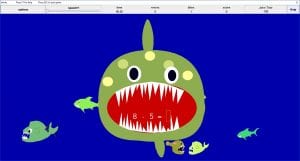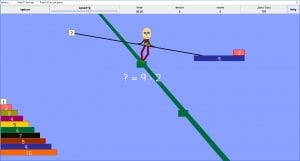What is it?
As the name suggests, this is the maths based equivalent of the better known Wordshark, and it shares many of the features.
There are a large number of games and activities – designed in quite a quirky, retro style, that enable the same concept to be learnt in a number of different ways. Topics are listed in such as way as to be easily searchable, with main headings such as Counting and sequencing, Division, Mixed operations and so on, which are then broken down into sub sections, like ‘Easy adds to 100,’ or ‘Counting in tenths.’ These can also be viewed as the National Curriculum 2014 KS1 and KS2 to aid classroom planning, and can be enabled with automatic progression so the level of challenge increases with mastery.
Once a topic is selected the system offers a list of Recommended games to be played, but there are other lists given, too, such as ‘Counting and Ordering,’ or ‘Place Value,’ as means of organising them.
The teacher can assign activities to learners, or they can select them themselves. A recording system means the teacher can later review how they got on, which includes errors made.
Who is it for?
Whilst it is largely thought of as a teaching tool for working with children and young peop le with special educational needs, it is full enough and flexible enough to be used more broadly than that, particularly in primary schools, where all learners will benefit from the opportunity to practice mathematical skills in fun and engaging ways. In secondary schools it will probably be more appropriate for those learners who need additional support to master mathematical concepts.
le with special educational needs, it is full enough and flexible enough to be used more broadly than that, particularly in primary schools, where all learners will benefit from the opportunity to practice mathematical skills in fun and engaging ways. In secondary schools it will probably be more appropriate for those learners who need additional support to master mathematical concepts.
How do I use it?
The content covers the entire primary school maths curriculum, however, this is a resource to be used as part of a wider intervention. The activities can be used as a reinforcement to build on what has been taught. The multiple approaches to each concept, or area of maths, means that a degree of repetition can be achieved without pupils becoming fed up or bored.
There is also a need to generalise, to transfer the skills and knowledge learnt whilst working on screen into other areas of the timetable. Sometimes pupils can become proficient in the area of focus whilst using the Numbershark games, but then not be able to perform the same tasks with pencil and paper, or by doing mental maths.
The recording system means it is theoretically possible to ‘plug in’ the learner to the machine then walk away whilst they get on with it, but there is a need to engage with the learner whilst playing the games to support their understanding. Otherwise they might see the gaming element without appreciating just what they are learning.
What else is there?
There are many edtech maths resources available. However, Numbershark is different because of the variety of activities that are offered for any particular area of the maths curriculum. Teachers may decide to only use one activity with a pupil, or have them do half a dozen, to approach it in different ways. The flexibility is there for the teacher to decide how this resource can fit in with the wider approach taken with a learner.

